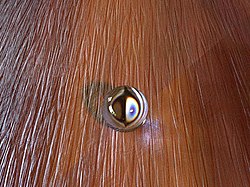This article has multiple issues. Please help improve it or discuss these issues on the talk page . (Learn how and when to remove these messages)
|
| Kerkythea | |
|---|---|
 | |
 Kerkythea is capable of rendering photorealistic caustics and global illumination. | |
| Developer(s) | Ioannis Pantazopoulos |
| Stable release | Kerkythea 2018 Boost / June 19, 2018 |
| Operating system | Linux, OS X, Microsoft Windows |
| Type | 3D Graphics Software |
| License | Freeware |
| Website | kerkythea |
Kerkythea is a standalone rendering system that supports raytracing and Metropolis light transport, uses physically accurate materials and lighting, and is distributed as freeware. Currently,[ as of? ] the program can be integrated with any software that can export files in obj and 3ds formats, including 3ds Max, Blender, LightWave 3D, SketchUp, Silo and Wings3D.